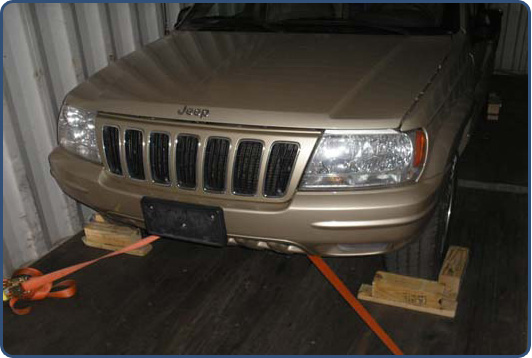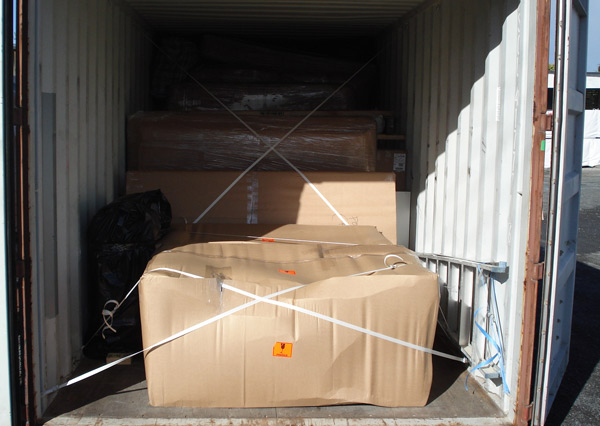Costa Rica Living & Relocation – You have come to Costa Rica and fallen in love with the land of “Pura Vida”. You have spent some time searching for your new home within its borders. Now it is finally time to make the move and relocate to Costa Rica. Most of you have contacted various shipping companies and decided which company you are going to use. Now comes the most stressful part, packing and loading the container.
 For many you will call a local company that will take care of this for you during the time allocated for loading your container, but others will want to do it yourself. You are normally given about 2 to 3 hours to load the container without additional fees being added to the shipping cost.
For many you will call a local company that will take care of this for you during the time allocated for loading your container, but others will want to do it yourself. You are normally given about 2 to 3 hours to load the container without additional fees being added to the shipping cost.
So what are the steps you need to take to ensure that your goods end up in Costa Rica in the same condition in which you loaded them?
Click to Get Your Free Costa Rica Shipping Guide
- Do a quick walk through in the container, if it requires a quick sweeping get that done. While walking through spot where the anchor points are inside the container. There should be one about every 2 to 4 feet depending on the container. These are located both at the top and bottom of the container.
- Get your white goods (fridge, washer, dryer, other heavy appliances) and other heavy goods ready to load. White goods should be dry and the doors on them left a little open with either cardboard or foam to make sure you do not open it up upon arrival to an awful smell. These pieces go first as normally they are the mostly square which will increase compactness. They will prop against both the far back wall compactly arranged and placed against each other. Once Strapped in this area should not move at all.
- Now it is time to load your boxes. These should be packed like you would be shipping them with a parcel service like Fed-Ex or UPS. Tape them up and make sure breakable items are packed accordingly. When packing the boxes it is like you are playing a real life game of Tetris. Making sure that there are no large spaces and everything fits together.
- When stacking the boxes place heavier boxes towards the bottom of the stack. Another tip is to place multiple smaller boxes in a larger one. Stack as high as possible; remember you are trying to fill the volume of the container as you go.
- While packing the boxes it is important to use all 3 dimensions of the container, length, width and height. If you are only using the first 3 to 4 feet of the height you are allowing much of your container to go to waste as well as making it easier for contents to shift.
- At intervals, it a good idea to use straps or ropes to make X shaped tie downs. Secure the tie downs a little in front of the load so far, and tightened, to compress the items against the front of the container.
- While packing the boxes it is important to use all 3 dimensions of the container, length, width and height. If you are only using the first 3 to 4 feet of the height you are allowing much of your container to go to waste as well as making it easier for contents to shift.
- After loading the regular shaped items, use mattresses and box springs, if you are bringing them, or some cheap plywood to make a barrier wall, and do your final X shaped bracing them against the items loaded so far.
- Random shaped items are the most difficult to find a place for in the container without disrupting the compactness. These include bikes, kayaks, garden tools, sports equipment, etc… These items
 should be placed in the space above the compactly packed items or tied down after your final X bracing. You can also secure these against the sidewalls, and/or the plywood used to brace your load. The weight should be evenly distributed and the items secured. Try to have as few loose items as possible.
should be placed in the space above the compactly packed items or tied down after your final X bracing. You can also secure these against the sidewalls, and/or the plywood used to brace your load. The weight should be evenly distributed and the items secured. Try to have as few loose items as possible. - If you are shipping vehicles, these are loaded last. Back in the vehicles, so they can be taken out easily. Remember the container on the truck is about 4 feet off the ground, so you will need to load with a ramp. The easiest way to load vehicles into a container is to have a towing company meet you with a flat bed tow truck. Vehicles can be loaded onto the tow truck, and backed into the container. Vehicles should have less than 1/8 of a tank of gas, and batteries disconnected. Put in park, secure the parking brake, and use nylon web tie downs to secure the frame to the container floor.
- Remember that when you are packing your goods you are going to need an inventory list that is used both in customs in the country of origin as well as translated into Spanish for customs in Costa Rica. An example can be found here.
These are the basic steps to take when loading your container for shipping to Costa Rica. If strapped in correctly and packed right you should have no worries about breakage of your valuables. At all times think to yourself: “can this item move sideways, and/or back & forth, if the ocean liner is rocking and rolling?”.
That is a brief summary of the process of loading a container for shipping to Costa Rica. If you want to try to do it yourself it can be done but we do recommend using a professional loading company. If you are interested reading through a step by step guide to shipping and relocating to Costa Rica click the link below for your Free Costa Rica Shipping Guide.

